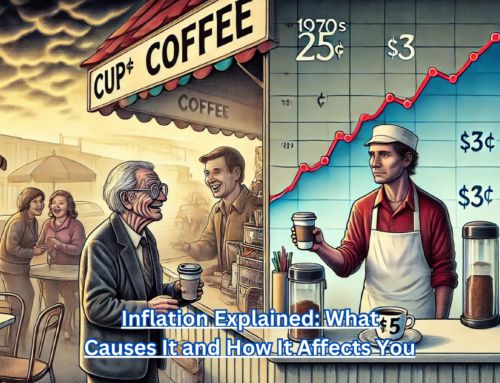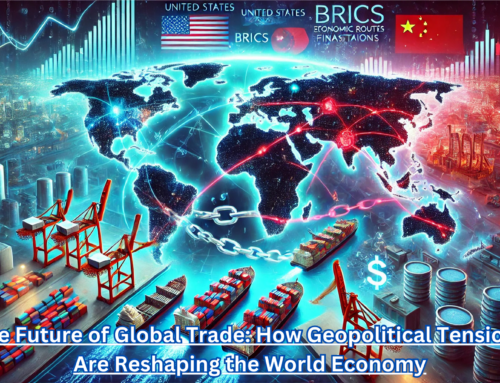There’s a new tension settling over the financial markets—a quiet but persistent one. It’s not the chaos of crashing headlines or dramatic bankruptcies. It’s something subtler. The kind of tension you feel when investors stop speculating and start hedging. And one number captures that mood better than anything: the VIX over 50.
That’s not a casual move. It’s rare, and it signals extreme short-term uncertainty in the stock market. But while some investors may see this as a flashing red light to panic-sell, it could actually be a good time to pause, re-evaluate your portfolio, and look for emerging opportunities. Because when fear runs this high, assets often become mispriced—both to the upside and the downside. This isn’t the time to run. It’s the time to prepare—with clarity, strategy, and professional advice.
What the VIX Is Really Saying Right Now
For those unfamiliar, the VIX (CBOE Volatility Index) doesn’t track the S&P 500’s price. It tracks how volatile investors expect it to be over the next 30 days. In simpler terms: it’s Wall Street’s best guess at how jumpy markets will be in the short term.
A VIX reading under 20 suggests markets are calm. Over 30 means investors are nervous. But when the VIX crosses over 50, it’s a sign that traders, institutions, and funds are preparing for serious turbulence.
We’re already seeing those tremors. Major indices are swinging wildly. Tech names are down as much as 40%. Safe-haven stocks are wobbling. And bond markets are sending confusing signals. The fear is palpable—and the VIX is quantifying it.
But here’s the part most investors overlook: these moments of extreme fear often precede some of the best long-term investment opportunities.
Why Is the VIX Over 50?
So what’s driving this spike? Not a single collapse or crisis, but rather a complicated cocktail of macro pressure points.
Inflation remains stubborn. Despite years of aggressive interest rate hikes, consumer prices are still elevated in key sectors. And while the Fed has recently eased off the brakes, even injecting limited liquidity into distressed areas of the market, we are not in a full-blown Quantitative Easing cycle.
At the same time, credit conditions are tightening. Banks are becoming more cautious. Commercial and consumer lending standards have grown stricter. Business owners are reporting harder access to capital. It’s a sign that the real economy is still feeling the aftershocks of the Fed’s previous tightening campaign.
Add to that rising geopolitical friction, lagging earnings, and a nervous consumer base, and it’s no wonder volatility is surging.
The VIX over 50 reflects not just current risks—but the anxiety over what’s still unknown.
The 12-Month Outlook: Navigating the Fear Gauge
So, what does a VIX over 50 mean for the road ahead?
In the short term, it signals turbulence. We can expect more market whiplash—sharp rallies, deeper dips, and gut-check moments where investors question their convictions. Volatility tends to spike fast but unwind slowly, so expect uncertainty to linger.
But longer-term? This could be a setup for significant opportunity.
Historically, VIX spikes have coincided with market bottoms—not tops. That doesn’t mean the exact bottom is here. But it does mean we’re likely in a zone where high-quality assets are starting to get oversold. Investors with a long horizon and disciplined approach often look back on these moments as rare entry points.
Still, this isn’t about hero trades or timing perfection. It’s about positioning wisely. That may mean increasing cash, reallocating to defensive sectors, or diversifying into non-correlated assets like gold or Bitcoin. Whatever your strategy, it should begin with asking the right questions—and probably speaking with a financial advisor.
The VIX’s Secret: It Doesn’t Predict Direction—Only Movement
One of the biggest misunderstandings about the VIX is that it tells you where the market is going. It doesn’t.
What it tells you is how fast the market might move. And right now, it’s telling us to brace for big swings—both up and down. That means you may see sudden rallies that feel like recoveries, only to watch them reverse days later.
That’s why emotional investing is so dangerous during high-volatility periods. The market becomes more about sentiment than fundamentals. The headlines start to lead the trade. And the people who suffer most are those reacting instead of planning.
But those who stay steady, keep learning, and adjust carefully? They tend to come out stronger on the other side.
What You Can Do Right Now
The VIX over 50 is a rare signal. And like all market signals, it requires interpretation—not instinctive reaction.
This is the time to revisit your portfolio. Review your allocations. Consider what kind of downside protection you really have. Ask whether now might be the right time to start building positions in companies or sectors you believe in—but which previously felt too expensive.
Talk to an advisor. Read more. Build a watchlist. Start thinking long-term.
Because fear spikes fast—but opportunity builds quietly.
When the fear finally fades and the market begins to recover, you’ll want to look back on this moment and feel confident in the choices you made—not regretful about the ones you didn’t.
To learn more, read The Global Debt Crisis: How High Government Borrowing Affects Economic Stability.
Follow me on X, Bluesky, or Medium to stay updated on the latest news, education, and great stories!
Note: Not financial advice. My stories are for educational purposes only. Consult a financial advisor before allocating assets to any investment vehicle.



